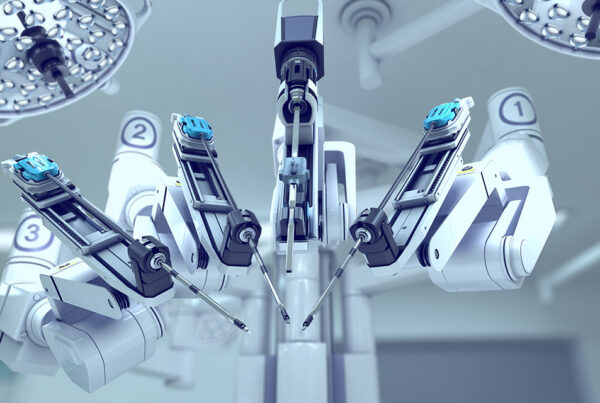Brazil has had some positive economic news of late, with GDP growth beating expectations slightly in Q3 2019. While estimated growth for 2019 is still modest at a modest 0.9%, forecasters predict more than 2% growth for 2020.
Brazil’s anticipated 2019 growth covers all sectors of the economy and does not necessarily reflect each industry, most notably the medical device and equipment sector. According to ShareScope, a service from Global Health Intelligence (GHI) that analyzes import data and uses it to analyze market size & share for medical equipment and device brands in Latin America, there has generally been a contraction in 2019 for Brazil’s medical devices and equipment market.
2019 Medical Device Market Analysis for Brazil
To analyze the direction of Brazil’s market this year, ShareScope focused on the imports of specific types of medical devices and equipment, specifically:
- Electrocardiographs
- Ultrasound machines
- Magnetic resonance imaging equipment (MRI machines)
- Equipment used in orthopedics/treatment of fractures
- Artificial joints
- Heart valves
- Pacemakers
- Computed tomography (CT scanners)
- X-ray machines
- Radiography/Radiotherapy equipment
While this is not an exhaustive list of all medical equipment imported into Brazil in 2019, it represents the major categories in terms of overall volume; as such, it serves as an overall indicator for the market in general.
Why Import Data?
ShareScope analyzes import data as a proxy for sales. This is because few products are manufactured locally and therefore imported medical devices and equipment are sold to medical institutions. As such, import data for medical devices and equipment are strongly correlated to actual sales and thus are a solid indicator of market activity.
Defining “Equipment” and “Devices”
It’s important to note that the import data analyzed by ShareScope are not just
the medical equipment and devices themselves, but also their parts and
components.
2018-2019 Decreases in the Brazilian Medical Devices/Equipment Market
The chart below breaks down the CAGR for 2014-2019 for these categories, as well as a year-to-year comparison for 2018-2019. It features the difference in both value and quantity in terms of equipment.

For 2018-2019, we forecast significant drops in quantities:
- 49% decrease in the importation of electrocardiographs
- 37% decrease in the importation of computed tomography equipment
- 22% decrease in the importation of X-ray machines
- 9% decrease in the importation of heart valves
- 5% decrease in the importation of ultrasound machines
- 2% decrease in the importation of MRI equipment
Overall, we expect to see a 2% decrease in the quantity of equipment imported into Brazil in 2019.
For 2018-2019, we forecast significant drops in the value of imported equipment:
- 33% decrease in the importation of electrocardiographs
- 23% decrease in the importation of radiography/radiotherapy equipment
- 15% decrease in the importation of equipment for orthopedics/fracture treatment
- 7% decrease in the importation of heart valves
- 4% decrease in the importation of artificial joints
- 2% decrease in the importation of X-ray machines
- 1% decrease in the importation of ultrasound machines
- 0% decrease in the importation of computed tomography equipment
Overall, we expect to see a 4% decrease in the value of imported medical devices and equipment into Brazil in 2019.
2018-2019 Increases in the Brazilian Medical Devices/Equipment Market
Pacemakers is the one equipment category in Brazil to post overall increases in 2019: a 32% increase in quantity and a 27% in value.
Other equipment types also posted some modest increases in quantities:
- 2% increase in the quantity of equipment for orthopedics/fracture treatment.
- 2% increase in the quantity of radiotherapy/radiography equipment.
- 5% increase in the quantity of artificial joints.
MRI machines also posted a mild increase in value (5%), despite the 2% drop in quantity, possibly indicating a higher sell-out price.
Interpreting the Results
In particular, the -4.5% CAGR for 2014-2019 reflect the overall economic challenges that Brazil faced during what some call the “lost half decade” for Latin America due to recessions and currency devaluations as the commodities bubble burst.
There’s a small overall margin compression (in the order of approximately 2%) that varies greatly according to equipment type.
Overall, this reflects that the medical device and equipment market in Brazil is still struggling to recuperate, even if there are “green shoots” for certain specific products.
Uncovering Opportunities
With Latin America’s largest market facing these challenges, it becomes ever more important for medical device and equipment manufacturers to be analytical in finding new opportunities.
While existing contacts and prospecting are important, sales teams need to leverage more tools, such as:
- Overall market sizing and its trends
- Independent and unbiased market share tracking
- Streamlining CRM systems to integrate data from multiple sources into one platform the whole team can use
- Discovering new accounts that are ideal for high-end, cutting-edge medical devices
- Determining market demand outside of your regular client base
This analytical approach is helpful for all markets, but much more in contracting markets like Brazil, in which data can make the difference between exceeding your sales goals and falling considerably short.
Contact us to find out more about how we can help you expand your sales in Brazil.


